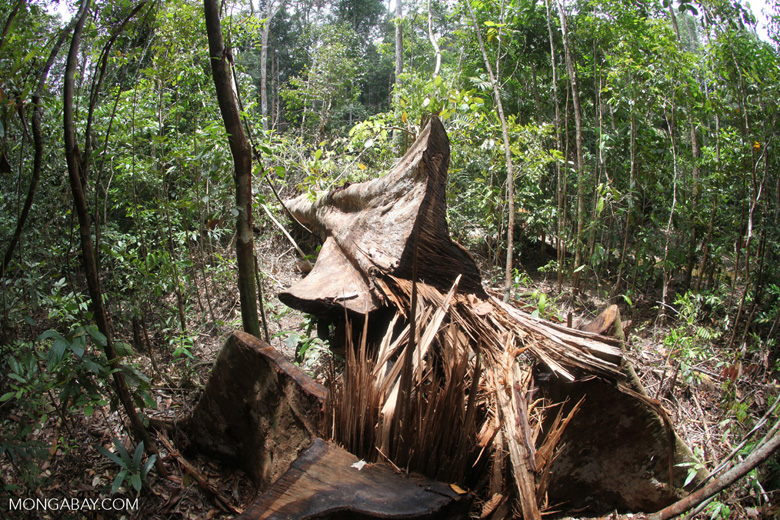A report recently released presents the most comprehensive scientific analysis of illegal logging ever published.
Its findings indicate a third of the tropical timber traded globally comes from illegal deforestation, and that regulation loopholes along with an uptick in organized criminal networks are bolstering the illicit activity.
The report, titled “Illegal Logging and Related Timber Trade – Dimensions, Drivers, Impacts and Responses” was produced by more than 40 scientists around the world, and was coordinated by the International Union of Forest Research Organizations (IUFRO) in association with the Collaborative Partnership on Forests (CPF).
“Forestry crime including corporate crimes and illegal logging account for up to $152 billion every year, more than all official development aid combined,” said Erik Solheim, Head of UN Environment, one of the partner organizations supporting the assessment.
It finds that bilateral trade agreements between producer and consumer countries – e.g., the European Union’s Forest Law Enforcement, Governance and Trade Action Plan (FLEGT) that requires timber products imported into the EU be legally harvested – have prompted shifts in the timber trade to less restrictive domestic markets. The researchers also found jumps in exports to India and China, which have less stringent regulations and are now the biggest importers of both legal and illegal tropical wood.
The report states illegal logging present in all tropical nations, but highlights Brazil, Indonesia, and Malaysia as the world’s dominant timber producer countries. Indonesia tops the list, generating around 65 million cubic meters of wood-based products in 2013, around 60 percent of which are estimated to have come from illegally harvested timber.
The Democratic Republic of the Congo (DRC) tops the list of countries with the largest proportions of illicit timber, with more than 90 percent of its production illegally sourced. The report draws on research that pegs Cambodia at 90 percent illegal production; Bolivia, Peru, and Laos come in at around 80 percent each.

In terms of non-tropical timber, Russia now appears to be the main source of boreal and temperate wood. The researchers estimate around 20 percent of Russia’s timber products come from illegal logging, and that 96 percent of its hardwood is exported to China where it is manufactured into flooring, furniture, and other products. These are sold domestically as well as to markets in Europe, Japan, and the U.S.
Research discussed in the report indicates around 30 percent of the world’s timber is coming from illegal forest conversion, which is being done primarily for agricultural purposes like palm oil, beef, and soy production. Termed “conversion timber,” illegally soured wood from forest clearing has risen in recent years, according to the report.
The report highlights organized crime and insecure land rights as big contributors to illegal logging activities around the world. It draws on research that shows illegally extracted natural resources, such as timber, were used to buy weapons during war and conflict in western Africa – namely the DRC, Liberia, and Sierra Leone. In the DRC, ongoing conflict in the eastern part of the country is still funded in part through exploitation of natural resources.
Land tenure issues are “profound drivers” of illegal logging, according to the report. It finds that despite around 86 percent of the world’s forests being publicly owned, only around 60 percent are managed by the communities that reside in them. And less than a fifth have land rights that are officially recognized.
Previous analyses found that land held and managed by local and indigenous communities tend to be significantly less affected by deforestation than even government-managed areas.
**

No comments:
Post a Comment